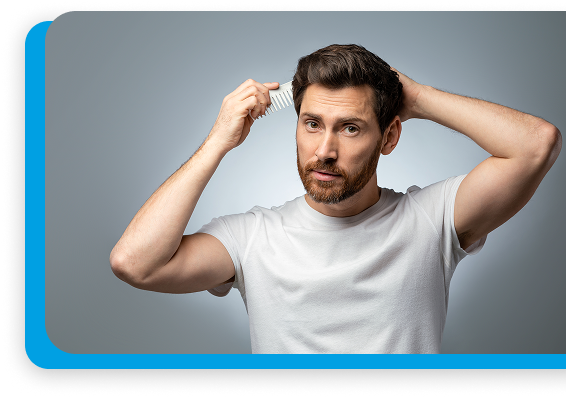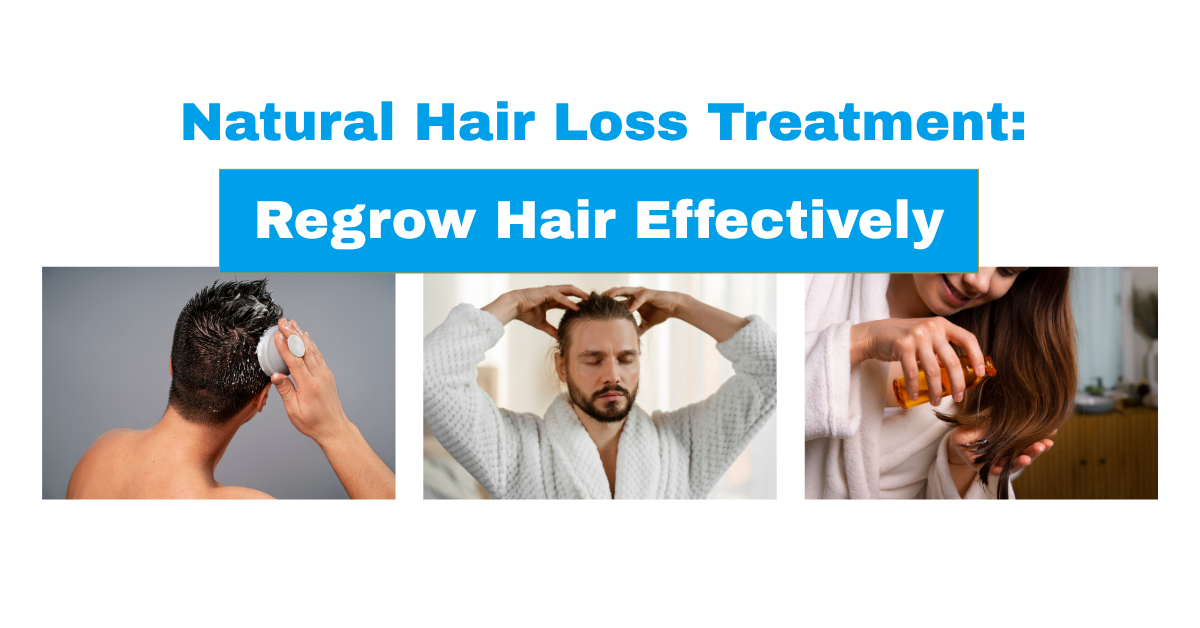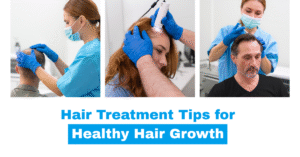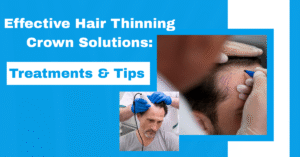How to Stop Hair Loss and Regrow Hair Naturally
How to stop hair loss and regrow hair naturally involves adopting consistent habits, lifestyle changes, and using natural remedies that support scalp and follicle health. It is a common question for people noticing thinning hair or bald spots—and looking for real, chemical-free solutions. It means using natural remedies like scalp massages, nourishing foods, and herbal oils to slow shedding and promote new hair growth. This gentle approach works well for men and women in the early stages of hair thinning or those with androgenetic alopecia. Treating the underlying causes—like stress, poor diet, or hormonal imbalances—can lead to long-term improvements. Ingredients like rosemary oil, saw palmetto, and biotin support hair regrowth by improving scalp health. Lifestyle shifts such as better sleep and stress control also boost results. If you’re searching for a natural, affordable solution to hair loss, these methods are a smart place to begin. With patience and the right care, you can bring back not just your hair—but your self-confidence too.
Why Hair Loss Happens
Losing hair can feel overwhelming. Whether it’s from stress, genetics, or health issues, understanding the type of hair loss you’re experiencing is key before choosing a solution for hair loss.
Common Causes of Hair Loss
- Genetics (Androgenetic Alopecia)
Frequently inherited, this is the leading reason for hair thinning, usually beginning as a receding hairline or thinning around the crown in both men and women. - Hormonal Imbalances
Life events like pregnancy, menopause, or thyroid issues can lead to temporary shedding. - Nutritional Deficiencies
A lack of key nutrients like iron, protein, or essential vitamins such as D and B7 (biotin) can weaken the hair follicles, resulting in excessive hair shedding. - Stress
Physical or emotional stress can lead to telogen effluvium, a temporary condition where hair prematurely enters the shedding phase. - Medical Conditions
Diseases like lupus, alopecia areata, or scalp infections can damage the donor area and slow hair regrowth.Natural Ways to Promote Hair Regrowth
Once you identify the cause, the next step is creating a routine to naturally restore your hair and possibly avoid the need for hair transplant surgeries.
1. Balanced Diet for Hair Health
When your diet is rich in nutrients, it provides your hair follicles with the fuel they need to thrive.
- Protein: Hair consists of keratin, so including lean meats, eggs, and beans helps strengthen hair grafts and promote stronger strands.
- Iron: Prevents hair shedding. Add spinach, red meat, and lentils.
- Vitamins A & C: These support the production of sebum and collagen, both crucial for strong roots.
- Omega-3 Fatty Acids: Found in salmon and flaxseeds, these support thick, vibrant hair.
2. Scalp Massage
A gentle scalp massage improves circulation in the recipient area, feeding your hair follicles. Enhance the process with coconut or castor oil for added moisture.
3. Essential Oils
Mix a few drops of essential oil with a carrier oil and massage it in:
- Rosemary Oil: Improves blood circulation and supports hair restoration.
- Peppermint Oil: Encourages new hair growth with a cool, tingling sensation.
- Lavender Oil: Balances scalp health and soothes inflammation.
4. Herbal Remedies
- Aloe Vera: Naturally soothes the scalp while delivering moisture to condition your hair.
- Ginseng: Stimulates hair follicles for better hair regrowth.
- Saw Palmetto: Helps balance hormones, especially helpful in cases of androgenetic alopecia.
Lifestyle Changes That Support Hair Health
Even without medical treatments or a hair transplant procedure, changing daily habits can improve hair strength and reduce future hair loss.
Reduce Stress
Relaxation methods like meditation or deep breathing can protect hair follicles from stress-related damage.
Avoid Heat & Harsh Chemicals
Regular use of heat styling tools can weaken hair and harm transplanted hair, especially during early recovery after a hair transplant experience. Use natural styles and limit dyeing or straightening.
Be Gentle with Your Hair
Use lukewarm water to wash your hair and always use a soft towel. Avoid tight hairstyles that pull at your donor area or recipient area.
When to Consider Hair Growth Products or Procedures
If natural remedies aren’t enough, here are advanced options for treatment for hair loss and lasting hair restoration:
1. Minoxidil
This topical product boosts blood flow and stimulates new hair growth. Available over-the-counter, it’s commonly used in non-invasive regrowth strategies.
2. Hair Supplements
Supplements with biotin, folic acid, or zinc help support healthy hair grafts. Always speak with your healthcare provider before adding any new supplement to your routine.
3. PRP Therapy (Platelet-Rich Plasma)
This treatment involves injecting your own plasma into the scalp to stimulate hair regrowth. It’s often recommended before or alongside types of hair transplant procedures.
Understanding Hair Transplant Surgeries
If you’ve tried everything and still continue to lose hair, medical procedures like fue hair transplantations or follicular unit transplantation (FUT) may be your next step.
Types of Hair Transplant Techniques
- Follicular Unit Extraction (FUE): This method involves removing single hair follicles from the donor site and placing them into the recipient area. It’s minimally invasive with fast recovery.
- Follicular Unit Transplantation (FUT): A strip of scalp is taken from the donor area, then divided into small units for precise transplantation. It’s best for larger bald spots.
- Direct Hair Implantation (DHI): A modern version of FUE that uses a pen-like implanter to place hair grafts with enhanced precision.
- Modified Hair Implantation (MHI): A newer, advanced method improving on DHI for better direction, angle, and density control.
These types of hair transplant procedures vary based on your needs, budget, and hair transplant expectations. Always consult a certified hair transplant surgeon or trusted transplant surgeons to guide you through the best option for your hair transplant experience.
Conclusion
You can take real steps today to stop hair loss and regrow hair naturally. A healthy lifestyle, natural treatments, and consistent hair care can go a long way toward restoring your hair. And if needed, advanced types of hair transplant techniques—like FUE, FUT, DHI, or MHI—are available to offer a long-term solution to hair loss.
Understanding your type of hair loss and taking early action—whether through natural methods or with the help of a hair transplant surgeon—can help you protect your hair and confidence for the future.












